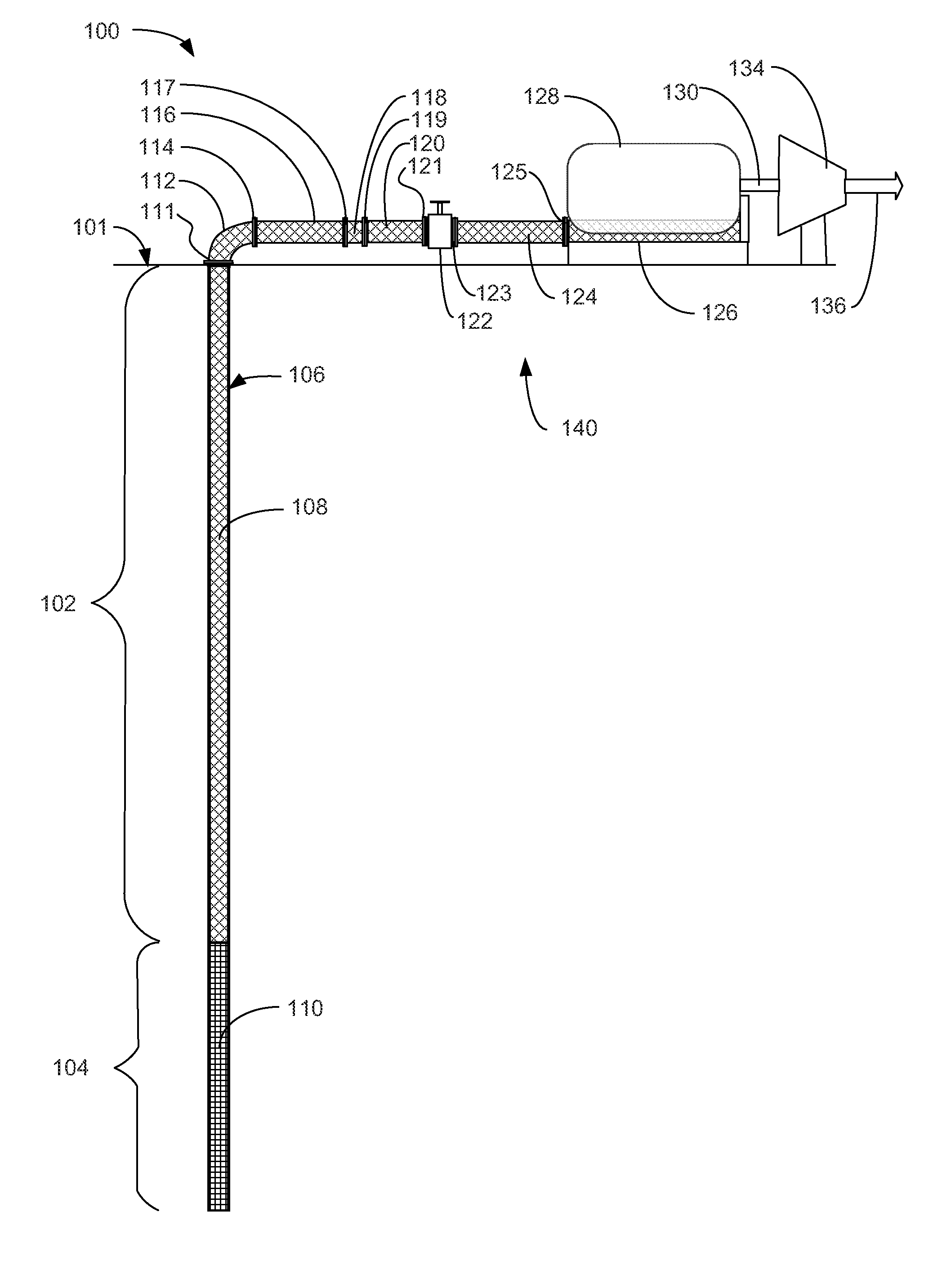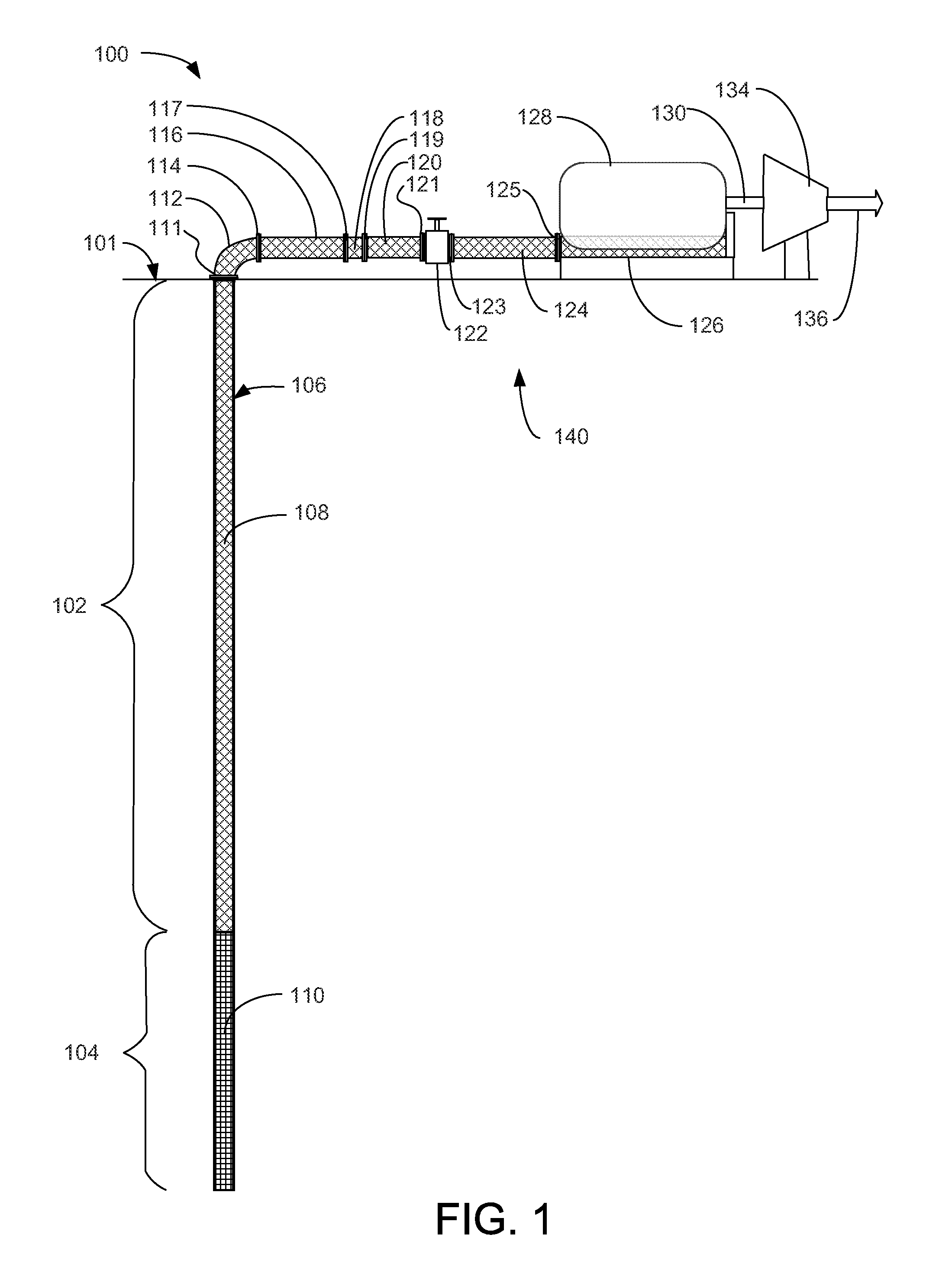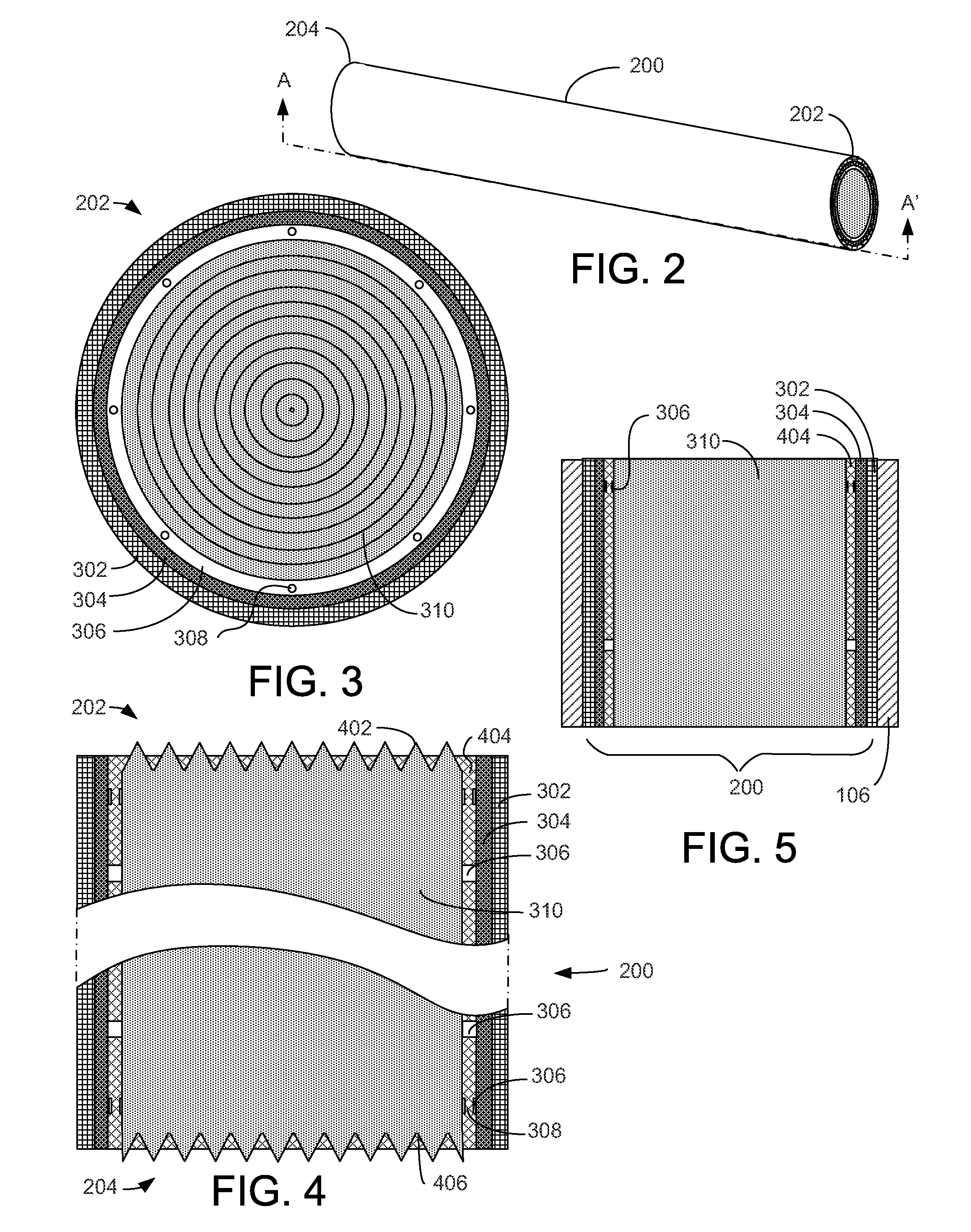Heat conduction systems
a heat conduction system and heat exchange technology, applied in the field of heat conduction systems, can solve the problems of very rapid heat transfer axially along the core and minimal radial heat transfer, and achieve the effect of axial heat transfer
- Summary
- Abstract
- Description
- Claims
- Application Information
AI Technical Summary
Benefits of technology
Problems solved by technology
Method used
Image
Examples
Embodiment Construction
[0038]FIG. 1 is a diagrammatic view of a geothermal application of an exemplary embodiment of the heat conduction system 100, according to a preferred embodiment of the present invention. Heat conduction system 100 is installed in a well pipe 106 below the surface 101 of the Earth. Heat conduction system 100 includes a down-hole heat exchanger portion 110 in geothermally active zone 104, an internally insulated heat conduction portion 108 in geothermally less active zone 102, and a top-side installation 140.
[0039]Exemplary top side installation 140 includes a heat conduction pipe bend module 112, a first heat conduction module 116; a pipe break heat conduction module 118, a second heat conduction module 120, a heat conduction shut-off valve 122, and a third heat conduction module 124. Exemplary top side installation 140 also includes a topside, or output, heat exchanger 126, which is illustrated as a bed of heat-conducting combination of carbon foam glass and graphene abutting a boi...
PUM
 Login to View More
Login to View More Abstract
Description
Claims
Application Information
 Login to View More
Login to View More - R&D
- Intellectual Property
- Life Sciences
- Materials
- Tech Scout
- Unparalleled Data Quality
- Higher Quality Content
- 60% Fewer Hallucinations
Browse by: Latest US Patents, China's latest patents, Technical Efficacy Thesaurus, Application Domain, Technology Topic, Popular Technical Reports.
© 2025 PatSnap. All rights reserved.Legal|Privacy policy|Modern Slavery Act Transparency Statement|Sitemap|About US| Contact US: help@patsnap.com



